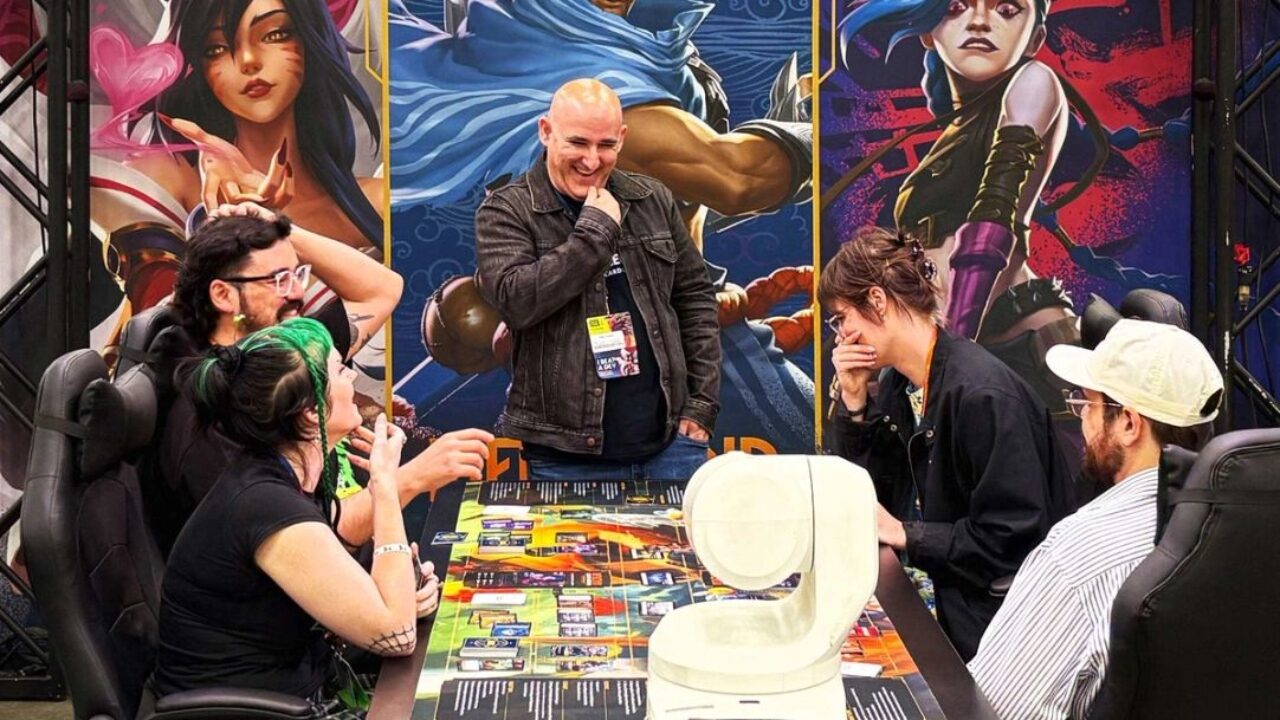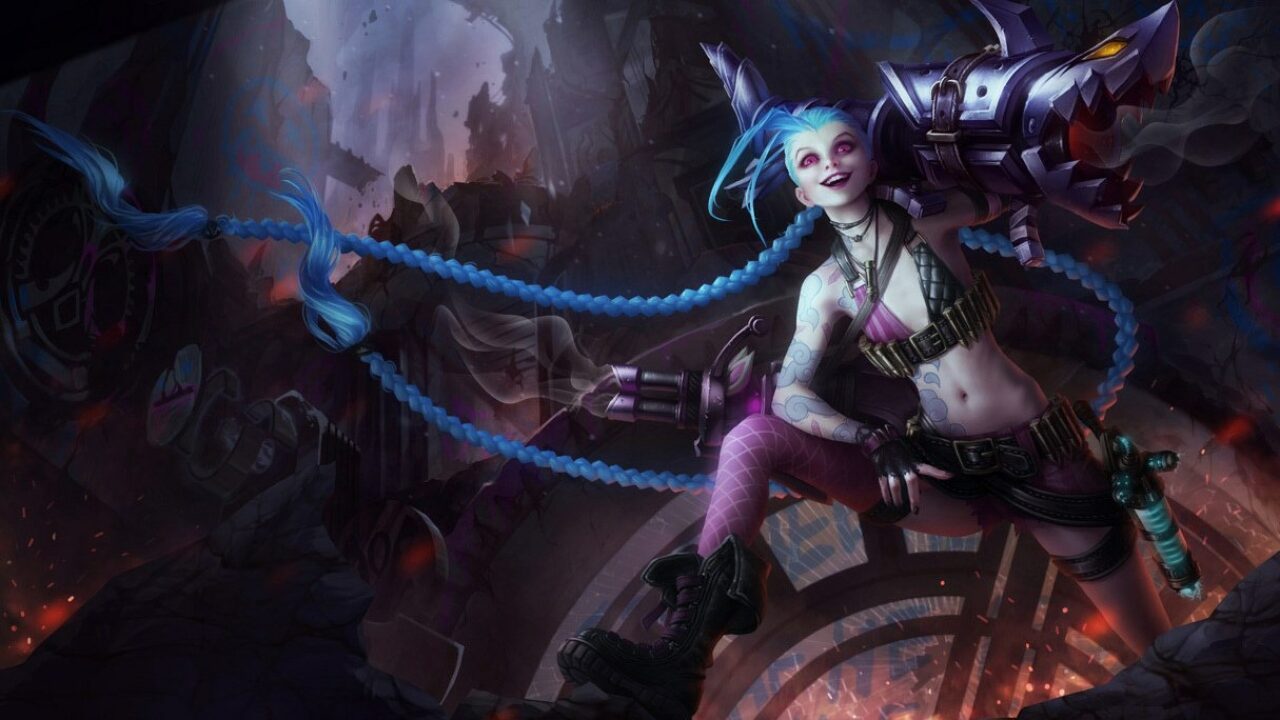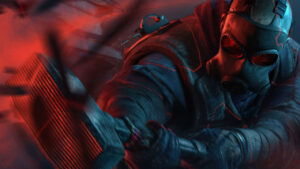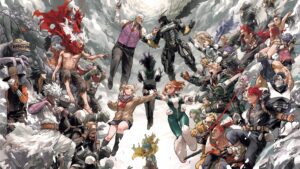Trading card game Riftbound had its big debut at Lucca Comics & Games this week, and players were able to dive into the action. Bringing Riot Games into the tabletop market couldn’t have been a small feat, but the game is ready, and League of Legends fans finally have a TCG all their own.
Riftbound is based on the world and characters of Riot Games’ League of Legends. The first set, Riftbound: Origins, has over 300 cards, with Champion Decks for LOL characters, Jinx, Lee Sin, and Viktor for ready-to-play fun, and new players can jump into the Proving Grounds starter box.
CGMagazine’s Ridge Harripersad chatted with Riftbound EMEA Lead, Nicola Cencherle, ahead of the game’s involvement at Lucca Comics & Games. Cencherle discussed various ways Riot Games came up with the current format of the TCG, how they are going to keep the meta fresh, and how they will be trying to curb the TCG issues like scalping.

How did the team develop the 2- to 4-player gameplay formats in Riftbound? Were they influenced by Magic: The Gathering Commander format?
Nicola Cencherle: The introduction of 2- to 4-player gameplay in Riftbound was driven by a desire to create a more collaborative and dynamic experience for players. We wanted to build something that allowed for deep strategy while still being accessible for groups. Our approach to gameplay formats was centered on finding the right balance between competitive gameplay and casual fun. We focused on making sure players could interact in meaningful ways, creating memorable moments not just through gameplay mechanics, but through the social aspect as well.
Were there any lessons from Legends of Runeterra that helped shape Riftbound’s development and play style? Or was the general gameplay philosophy taken from already established TCGs?
Nicola Cencherle: Legends of Runeterra definitely played a role in shaping our approach to Riftbound. One of the core takeaways was how important it is to allow players to have agency over their decisions, whether that’s in terms of deck-building or strategic plays. While Riftbound is inspired by a variety of TCGs, we focused on making it unique by leaning into the Riftbound universe and ensuring that the mechanics would feel fresh and engaging for both veteran TCG players and newcomers alike. In terms of gameplay philosophy, we’re also driven by a desire to make each game feel dynamic and to emphasize player interaction at every level.
With the growing competition in the TCG gaming space, how do you plan to differentiate Riftbound from other games in the same genre? Is there a possibility to grow Riftbound into an esports live event in the same way League of Legends and Valorant have already?
Nicola Cencherle: Riftbound is designed with strategic depth and community building at its core. We want to offer a game that’s fun to play, but also rewarding to master with a focus on varied playstyles and unique decks that evolve over time. While the competitive TCG space is certainly growing, we believe our deep League of Legends roots allow us to offer something uniquely aligned with esports culture and competitive play.
While we’re focused on delivering an exceptional global community experience and online tournaments in the short term, we definitely see the potential for larger-scale esports events in the future. The engagement and passion we’ve seen from fans of League of Legends and Valorant give us a strong foundation to build on, and we’re constantly evaluating how to bring competitive Riftbound to a wider stage.

The Chinese TCG competitive scene has already seen an uptick in Kai’Sa and Master Yi deck builds, which have been used approximately 19 times in competition. What are some other trends Riot Games is already seeing in competition, and what strategies will Riot Games be making to continuously shake up the meta builds and reduce the lack of diverse decks?
Nicola Cencherle: It’s really exciting to see certain deck archetypes like Kai’Sa and Master Yi rise to prominence! We’ve seen other emerging strategies focusing on synergy-driven deck-building and counterplay, particularly around units that manipulate the battlefield in unique ways. At Riot Games, we’re always working to ensure that our competitive environment remains fresh and dynamic. We’ve got a team dedicated to keeping the meta evolving, whether it’s through balance adjustments, new card releases, or even incorporating community feedback into gameplay changes.
We want Riftbound to foster diversity in deck builds, and that means providing players with the tools they need to create varied and unexpected strategies. There’s always a balancing act in making sure that strong strategies are viable, but that no one approach dominates for too long.
Putting aside the competitive insights from the release in China, what were some of the general challenges launching the TCG sets there, if any? Or what challenges did Riot Games learn from that launch, going into the global launch?
Nicola Cencherle: Launching Riftbound in China was a fantastic learning experience. One of the challenges we faced was understanding how deeply integrated local culture and playstyles are with competitive card games. Every region has its own preferences for gameplay pacing, and this made us refine the core experience to ensure it felt intuitive and fun across different cultural contexts.
Moving into the global launch, we’ve learned a lot from these experiences, and we’re focused on creating a game that resonates with diverse audiences while staying true to what makes Riftbound special.
On a similar note, what steps is Riot Games taking to combat TCG market inflation, scalping, and supply shortages—as seen from other TCGs?
Nicola Cencherle: We’re committed to creating an accessible and fair marketplace for all players. We’re working to ensure that card availability and pricing remain in line with the game’s core values of accessibility and community. For example, we’re leveraging digital tools to help prevent scalping and ensure that players can get their hands on cards without overpaying.
Additionally, we’re exploring options for online play and digital rewards so that players can enjoy a great experience without worrying about the physical scarcity of cards. As the TCG market grows, we’ll continue to monitor these issues closely and adjust our approach as needed.

The Riftbound: League of Legends Arcane Box Set proves that League of Legends fans come from the games, comics, and the Netflix series Arcane. Will players expect to see various characters and skins make their way into Riftbound in a playable format, aside from the collectible set?
Nicola Cencherle: Absolutely! While the Riftbound: League of Legends Arcane Box Set was a special collector’s edition aimed at celebrating the broader League of Legends universe, we’re looking forward to exploring more ways to integrate beloved characters and skins from the League of Legends franchise into Riftbound in a way that fits the game’s unique gameplay style. Players can expect more exciting, playable content from the wider Runeterra universe in future updates.
As Riftbound is being showcased at Lucca Comics & Games, could you give us a sneak peek at any exclusive EMEA-specific content for Riftbound? Or what players can expect on the post-launch roadmap?
Nicola Cencherle: We’re really excited to showcase Riftbound at Lucca Comics & Games! While we can’t reveal all the surprises just yet, there will definitely be some during the Lucca event. As for the post-launch roadmap, players can expect to see new card sets, new mechanics, and new products to support the growing, vibrant global community.
What kind of feedback and goals do you hope to gain from the Riftbound showcase at Lucca Comics & Games ahead of the upcoming October 31st, Halloween launch?
Nicola Cencherle: At Lucca Comics & Games, we’re excited to hear directly from the players and gather valuable feedback on the experience. Our main goal is to ensure that players feel engaged and excited about what’s to come with the launch. This event gives us a chance to fine-tune things like game balance, player engagement, and community support, all while continuing to build excitement for Riftbound’s official global debut.

Lastly, what are some of your personal highlights (ie, favourite decks, card artworks, gameplay mechanics, etc.) about Riftbound that you hope players will love?
Nicola Cencherle: One of my personal highlights is the deck-building freedom in Riftbound. I love how you can experiment with different strategies and playstyles, whether you’re going for an aggressive deck, a control-heavy build, or a combo strategy. Also, the artwork and the world of Runeterra come to life in ways that are really exciting to see on the tabletop. The visual storytelling of each card and how it ties back to the broader League of Legends lore is something I hope players will really appreciate.
Ultimately, though, I hope players will find joy in the strategic depth of the game, the interaction with others, and the community that we’re building around Riftbound. It’s all about having fun together.
Those who want to play Riftbound can grab cards on the Riot Games Merch Store or at select local game shops. The franchise plans to release four box sets per year, with the next one, Riftbound: Spiritforged, scheduled for its English release on February 13, 2026.




